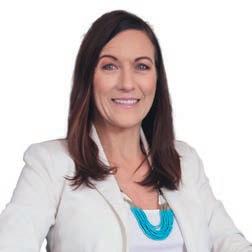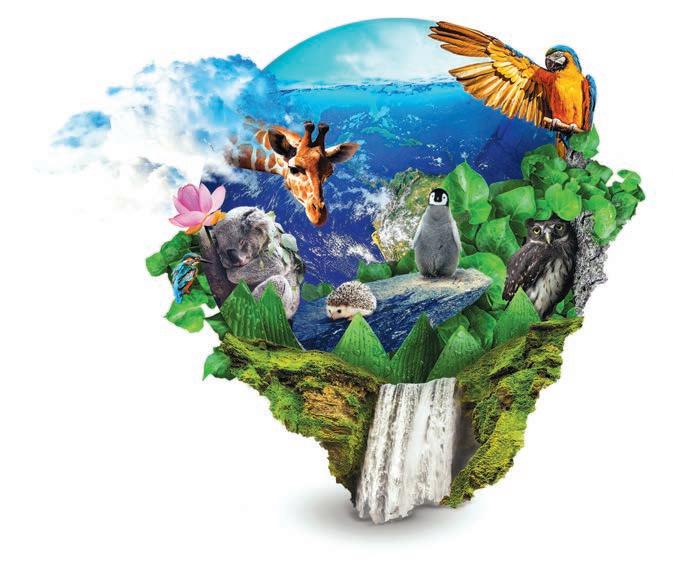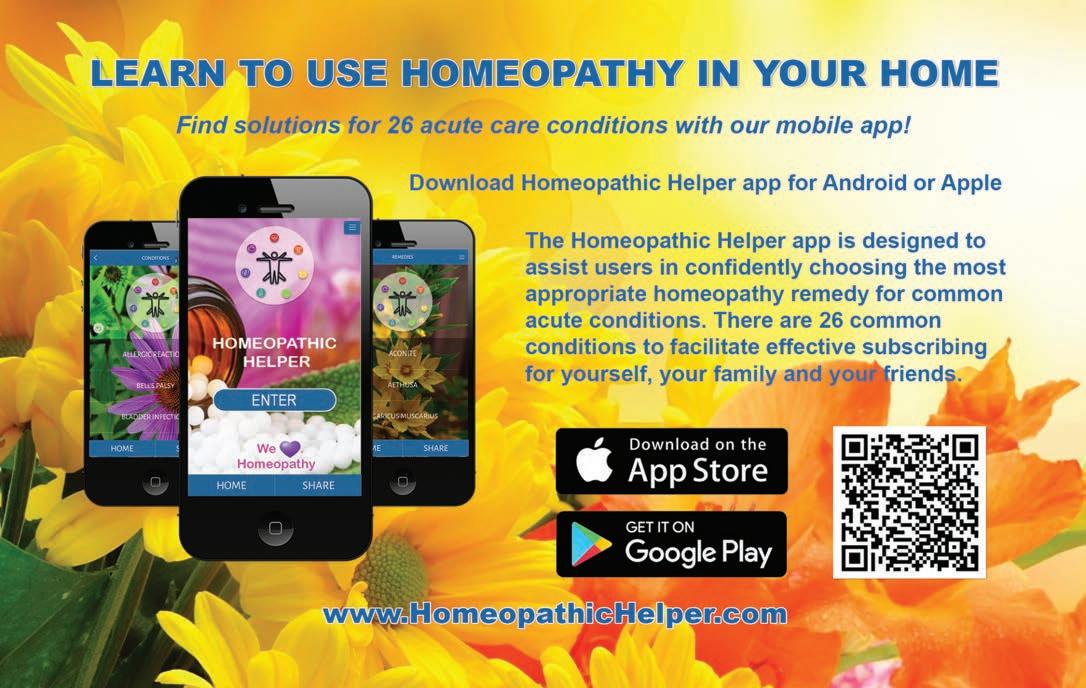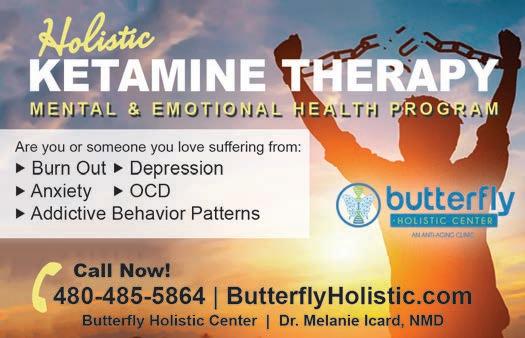Minimizing Toxic Exposure

BEYOND SUSTAINABLE B uilding a Food System That Regenerates

Youth Campaigning for Climate Justice
Ecological Grocery Shopping
PEOPLE. PLANET. PURPOSE.



Minimizing Toxic Exposure

BEYOND SUSTAINABLE B uilding a Food System That Regenerates

Youth Campaigning for Climate Justice
Ecological Grocery Shopping











Don't miss interviews and lifestyle tips for reducing stress.


Scan the QR code to JOIN US LIVE ONL INE as these top women in wellness share their expert insights for reducing stress and achieving WELLthier Living!
 Trevor Cates, ND Stress Impact on Skin
Jaclyn Chasse, ND Stress and Fertility
Carol Penn, DO Aging Gracefully
Carrie Jones, MD, FAAP Stress and your Thyroid
Jaquel Patterson, ND, IFMCP Sleep, Cortisol and its Relation to Stress
Anna Cabeca, DO, OBGYN,FACOG Stress and Li bid o
Arti Chandra, MD, MPH Healing Your Gut
Anne Marie Fine, ND Cracking the Beauty Code
Kela Smith, PhD DNM Stress & Fertility
Jyl Steinbeck Women’s Health & Homeopathy
Trevor Cates, ND Stress Impact on Skin
Jaclyn Chasse, ND Stress and Fertility
Carol Penn, DO Aging Gracefully
Carrie Jones, MD, FAAP Stress and your Thyroid
Jaquel Patterson, ND, IFMCP Sleep, Cortisol and its Relation to Stress
Anna Cabeca, DO, OBGYN,FACOG Stress and Li bid o
Arti Chandra, MD, MPH Healing Your Gut
Anne Marie Fine, ND Cracking the Beauty Code
Kela Smith, PhD DNM Stress & Fertility
Jyl Steinbeck Women’s Health & Homeopathy




Find additional articles online at NaturalAZ.com. Go to the homepage and explore local businesses and articles exclusively from Natural Awakenings.

on Farming for Human and Planetary Health


health briefs
Pomegranate May Offer Skin and Gut Benefits
Possible Links Between Veggie Diets and Depression

global briefs

Insect-Inspired Drones Build Structures

Lowering the Carbon Footprint of Batteries
Rebuilding Coral Reefs With Sound
Check out the latest events at naturalaz.com/calendar

To advertise with Natural Awakenings or request a media kit, please email PhoenixAds@NaturalAZ.com

Deadline for ads: the 10th of the month.
EDITORIAL SUBMISSIONS
Go to NaturalAZ.com/pages/contact to inquire about editorial opportunities. Deadline for editorial: the 10th of the month.
CALENDAR SUBMISSIONS
Calendar events are online only, and can be submitted at NaturalAZ.com/calendar
NATIONAL MARKETS
Advertise your products or services in multiple markets!
Natural Awakenings Publishing Corp. is a growing franchised family of locally owned magazines serving communities since 1994. To place your ad in other markets call 239-206-2000. For franchising opportunities call 239-206-2000 or email NaturalAwakenings@KnoWEwell.com.

20
26
28
How to Clean Our Water, Food and Indoor Air


PUBLISHER
Tracy Patterson, BSc, MES DESIGN & PRODUCTION
Vegetorium, LLC
COPY EDITOR
Sara Gurgen
DIGITAL PLATFORMS
Hass Solutions Locable
Natural Awakenings – Phoenix 17470 N Pacesetter Way Scottsdale, AZ 85255 Tracy@NaturalAZ.com NaturalAZ.com


NATIONAL TEAM
CEO Kimberly B. Whittle

National Editor Sandra Yeyati
Editor Brooke Goode
Copy Editor/Proofreader Melanie Rankin
Design & Production
National Advertising

Gabrielle W-Perillo
Lisa Doyle-Mitchell
© 2023 by Natural Awakenings. All rights reserved. Although some parts of this publication may be reproduced and reprinted, we require that prior permission be obtained in writing.
Natural Awakenings is a free publication distributed locally and is supported by our advertisers. Please contact us to find a location near you.
We do not necessarily endorse the views expressed in the articles and advertisements, nor are we responsible for the products and services advertised. Check with a healthcare professional regarding the appropriate use of any treatment.
Reading the articles in this month’s edition made me think back to how my family inadvertently did our small part in reducing our environmental impact. We had a garden in our backyard when I was growing up—our bit of dirt where we spent hours digging, weeding and eating the delicious vegetable bounty. That was at a time when you had to soak crucifers, like broccoli and cauliflower, in salt water to get rid of the worms (which would float to the top, should there be any).
Many years later, my husband and I bought our first little house, which came with an equally little garden! We decided we should try our hand at gardening because by this time, the vegetables we bought at the grocery store had changed to the point of being tasteless. It was so exciting to have a garden again, and as the “icing on the cake,” the seller had brought in some beautiful topsoil, so there was optimum chance for success in the short growing season where we lived. So, we got to work seeding, which didn’t take long in the postage stamp-sized spot.
Well, I can only say, “Wow, what a crop!” We were overrun with veggies of all kinds— radishes, carrots, potatoes, onions, green beans, peas, among others. It was almost comical how the little square patch appeared to be just about bursting! And around a couple of edges, we planted nasturtiums, as I had learned in one of my university courses on companion planting that they are good at repelling certain bugs. An added bonus was that we could top our fresh salads off with a few of these tasty, colorful edible flowers.
One day while in the garden gathering some veggies and flowers for our dinner, I suddenly noticed a huge bee after me. A little afraid of bugs, I was about to drop everything and sprint to safety, but hesitated for a second—just long enough to realize that it wasn’t the world’s largest bee, but, in fact, a tiny hummingbird, most probably there to relish in the nasturtiums’ exceptionally sweet nectar! He was right there near my legs “buzzing” around, no doubt trying to accomplish what a bee would have been successful at: running me off and away from “his” garden.
Today, I no longer have a garden, but I’m thinking that it’s time to get back to it and plant some veggies, herbs and a few companion flowers, which would not only be good for me, but also help the environment and attract our little flying friends.
Please note that all deadlines (advertising and editorial) are the 10th of the month prior to the edition being published.
For example, April 10 is the deadline for all May edition submissions.



After receiving a powerful message in February 2020 that she should open a Blu Room in Phoenix, Pat Duryea, Ph.D., opened the Blu Dragon to the public on April 1, 2021. For more than 40 years, she has worked to help people reduce their stress, and she is consistently looking for new ways to enhance her practice. When she opened the Blu Dragon, she knew she had found the cream of the crop for stress reduction.
The Blu Room is a patented technology that brings ancient technology and cutting-edge present-day technology together in a magical space, shielding you from the outside world. Imagine walking into an octagonal mirrored room and lying down on a therapeutic bed surrounded by calming music and soft narrowband ultraviolet B lights. As you surrender to whatever experience comes, you simply “be” for 20 minutes. This technology provides individuals what they need to bring peace and calm into their lives. The person walking into the Blu Room is not the same person walking out of the room 20-minutes later.
As a psychologist, Duryea was mostly focused on how the Blu Room technology could help her clients’ mental health. In her first year, she had clients telling her they were sleeping better and were happier with life—she even had one client with post-traumatic stress disorder (PTSD) tell her after his second session that he felt “unburdened.” This made her heart soar and tops her list of achievements. However, what she also noticed during her first year was that clients were reporting that their physiological health was improving as well. Clients were reporting that their blood pressure was lower and their pains were gone. Nothing prepared Duryea, however, for what was to come in her second year of business. The power of the Dragon surged. Conscious-raising experiences became the norm. Many clients come out of the Dragon feeling empowered and with messages of what they need to do next in their lives.
Location: 6102 N. 16th St., Ste. 19. For more information, call 480665-9781 or visit PhxBluDragon.com. See ad, page 15.
This May, join Natural Awakenings and KnoWEwell for a women’s wellness event entitled Overcoming Stress: How to Balance It All. Each Tuesday at 5 p.m. PDT/8 p.m. EDT, top integrative and functional medicine experts in women’s health will present cutting-edge insights into the many ways that stress can impact hormones, thyroid function, fertility and libido, and also provide tangible recommendations to improve skin care, aging, s leep and mindset. The speakers are:
n Anna Cabeca, board-certified obstetrician and gynecologist, author of The Hormone Fix



n Trevor Cates, naturopathic doctor, author of Clean Skin From Within
n Anne Marie Fine, naturopathic doctor, author of Cracking the Beauty Code

n Carrie Jones, functional medicine physician specializing in hormone and thyroid health

n Jaquel Patterson, naturopathic physician, success coach, author of Women and Lyme



n Carol A. Penn, board-certified physician, mindset coach, author of Meditation in a Time of Madness
n Arti Chandra, double board certified physician specializing in integrative and functional medicine and public health.
n Jaclyn Smeaton, naturopathic doctor specializing in hormone health and reproductive medicine



n Kela Smith, holistic-integrative fertility and hormone doctor
n Jyl Steinbeck, personal trainer and lifestyle expert
n Lorraine Maita, board certified physician, specializing in antiaging and hormone harmonizing
The $59 event fee includes all Tuesday evening sessions. To learn more and register, visit Tinyurl.com/KWWstress or scan the QR Code.


This year’s Earth Day theme—Invest in Our Planet—reminds us that it is not enough to merely celebrate our ancestral home for one day. We are called upon to dedicate our time, money and talents year-round to ensure a sustaining and just world for generations to come. The motto also calls attention to the economic realities and opportunities of the climate crisis. It is no wonder that EarthDay. org, the global organizer of this annual event, decided to keep the same theme as last year, thus underscoring a continuing need to bring global
economies together in harmony with the environment.
“In 2023, we must come together again in partnership for the planet. Businesses, governments and civil society are equally responsible for taking action against the climate crisis and lighting the spark to accelerate change towards a green, prosperous and equitable future. We must join together in our fight for the green revolution, and for the health of future generations. The time is now to invest in our planet,” advises EarthDay.org
President Kathleen Rogers.Surmounting the climate crisis is within reach if we all take action. The time is right for innovators to bring planet-saving ideas to market, and for consumers to stop supporting brands that are socially and environmentally irresponsible—instead, spending money with businesses that take the Earth’s future seriously.
In the voting booth, citizens have the power to elect leaders that will help build a green economy through regulations, incentives and partnerships with the private sector. We can press our congressional representatives to support clean energy jobs and move away from the doomed fossil fuel economy.
There are many ways to make a difference in our daily lives, too. We can eat sustainable foods, pick up trash while on a run, participate in beach cleanups, reduce our use of plastic, write our representative, switch to solar power, take reusable bags to the grocery store, drive an electric vehicle, compost, go pesticide-free, plant a pollinator garden, support local farmers, eat less meat, purchase secondhand clothing, use environmentally friendly cleaning products, turn off lights when not in use, take shorter showers and so much more. Learn about all of the ways to make a difference at EarthDay.org.
This year, join one of the empowering events in the Phoenix area and meet planet-loving people that are ready to push up their sleeves, vote with their pocketbooks and dedicate their time to a healthy, equitable and prosperous future on Earth.


There are many ways to be environmentally responsible when shopping for food. Here are a few tips.
Americans use approximately 100 billion single-use plastic bags each year, which accumulate in landfills and waterways and never truly decompose. Some states have banned disposable bags, but many still permit them. Come prepared to the grocery store with reusable bags to reduce the use of single-use plastics.
Food packaging and containers make up 23 percent of landfill waste. Shop around the perimeter of the store as much as possible to find the freshest, healthiest foods with the least amount of packaging, such as produce, bulk items, dairy, fresh fish and meat. Bulk items like nuts, dry beans, coffee, tea and grains can be purchased in exactly the amount needed with no packaging.
The average American wastes about 21 percent of the food they buy, which equates to about $1,800 a year. To avoid overbuying and shrink the carbon footprint of multiple shopping trips, plan meals a week (or month) ahead and come with a shopping list organized by the sections or aisles of the store.

Local produce has a drastically smaller carbon footprint than
fruits and vegetables that must travel long distances by truck, airplane or ship. Buying local, in-season produce reduces waste because the produce is fresher when purchased and will not spoil as quickly at home. If the family’s diet includes meats, choose pasture-raised, grass-fed products from farmers that practice regenerative organic agriculture, which improves the quality of the land and maintains local ecosystems.
Choose foods that were produced with the environment in mind by looking for the following labels, seals and certifications:
n USDA Organic
n Biodynamic (BDA) for food produced without chemical pesticides or herbicides, using organic, non-GMO seeds
n Non-GMO Project Verified for foods that were not genetically engineered
n FAIRTRADE Mark and Fair Trade Certified for food producers committed to reasonable wages and the safe, fair treatment of workers
n Climate Neutral Certified for food manufacturers committed to reducing their greenhouse gas emissions
n Safe Catch for sustainably caught fish
n Aquaculture Stewardship Council (ASC) and Best Aquaculture Practices (BAP) for sustainably farmed seafood
9 out of 10 children suffer from
 Kristen Fischer, DDS
Kristen Fischer, DDS

A new study published in Molecular Psychiatry has shown that eating more fermented foods and fiber daily for just four weeks significantly lowered perceived stress levels.
Forty-five participants with relatively low-fiber diets were split into two groups.
One group met with a dietitian that recommended a psychobiotic diet, which included six to eight daily servings of fruits and vegetables high in prebiotic fibers, such as onions, leeks, cabbage, apples, bananas and oats; five to eight daily servings of grains; three to four servings of legumes per week; and two to three daily servings of fermented foods like sauerkraut, kefir and kombucha. The control group received only general dietary advice based on the healthy eating food pyramid.
The group following the psychobiotic diet reported feeling less stressed compared with those in the control group. Moreover, significant changes in the level of certain key chemicals produced by gut microbes were found in these participants. Some of these chemicals have been linked to improved mental health, which could explain why the participants reported feeling less stressed. The quality of sleep improved in both groups, but those on the psychobiotic diet reported greater sleep improvements.
After a systematic review of 39 studies to evaluate the benefits and harms of screening for anxiety disorders in children and adolescents aged 8 to 18, the U.S. Preventive Services Task Force (USPSTF), a group of disease prevention and medical experts assembled by the U.S. Department of Health and Human Services, now recommends that primary care physicians perform such screenings, even if there are no signs or symptoms of anxiety.
A common mental health condition in the U.S., anxiety disorder involves excessive fear or worry that manifests as emotional and physical symptoms. In children and adolescents, it is associated with impaired functioning, educational underachievement and an increased likelihood of a future anxiety disorder or depression. The 2018-2019 National Survey of Children’s Health found that 7.8 percent of children and adolescents aged 3 to 17 had a current anxiety disorder.
USPSTF recommended using screening questionnaires to identify children at risk, noting that studies show that children with anxiety benefit from treatments that may include cognitive behavioral therapy or psychotherapy. They also concluded that there is insufficient evidence to assess children 7 years old or younger.

Researchers in the UK compared the effect that different types of daily movement had on overall cognition, memory and executive function. Their study, published in the Journal of Epidemiology and Community Health, reported that replacing sitting, sleeping or gentle movement with less than 10 minutes of moderate to vigorous activity (brisk walking, bicycling, running up and down stairs, aerobic dancing, jogging, running or swimming) can protect the brain and improve working memory and executive processes like planning and organization. The intensity of the exercise matters, and study participants that engaged in light physical activity, rather than more vigorous activity, saw declines in cognitive performance. However, light activity is still more beneficial than sitting, the scientists found.
The data for these findings was taken from the 1970 British Cohort Study, an ongoing survey that tracks the health of a group of UK-born adults. The group of nearly 4,500 participants consented, at age 46, to wear an activity tracker and complete verbal memory and executive functioning tests, and they were followed from 2016 to 2018.


There are approximately 6 million non-native, feral pigs in the United States. They destroy an estimated $2.5 billion in crops, pastures, forests and livestock each year across 35 states and jeopardize endangered species, including the Florida panther, green sea turtles and red-cheeked salamanders. But their greatest threat may be the potential to carry disease to humans, domesticated hogs and other animals.
The pigs were brought to the Americas from Europe as early as the 1500s. They reproduce quickly, with up to two litters of four to 12 piglets every 12 to 15 months, and can grow to be five feet long and weigh more than 500 pounds.
Feral swine can carry a long list of pathogens, including leptospirosis, brucellosis, swine influenza, salmonella, hepatitis and pathogenic E. coli. The U.S. Department of Agriculture describes swine as a “mixing vessel species”, meaning that they are susceptible to human viruses and have the ability to create novel forms of those diseases. Human risk to known and new pathogens is greater from feral swine than other wildlife due to our proximity to them and their large numbers. Hunters and farmers are at greatest risk. Anyone that handles feral swine should wear rubber gloves and avoid fluid exchanges.


A new study published in Environmental Science & Technology finds that gas stoves frequently leak dangerous pollutants into the kitchen. A team from PSE Health Energy collected samples from 159 gas stoves across California and sent them to a laboratory for analysis. The researchers found 12 pollutants in total, and four of these gases—benzene, toluene, hexane and m- or p-xylene—were present in 98 percent of the samples. Most of the stoves leaked at least a little, even when they were turned off.
The natural gas used in stoves is comprised mostly of methane and other hydrocarbons and gases. Before it is delivered into homes and business, most of the non-methane gases are removed and a strong-scented chemical is added to alert people to possible leaks. The leaks studied by the California researchers were not substantial enough for people to notice this rotten-egg smell, but they could still expose users to harmful and potentially cancer-causing pollutants. Those with gas stoves are encouraged to turn on their exhaust fans whenever they are in use.
Close your eyes. Centered in this sacred space allow the soothing music and soft narrowband UV-B light to flow over and around you. Surrender to the experience and simply BE for a 20-minute session.
The consciousness raising experience of Blu Room technology grants individuals what they need to bring peace and calm into their lives. Recognize the subtle changes to your body and mind. Feel calmer, restored, and perhaps rejuvenated after a session.



 by Sandra Yeyati
by Sandra Yeyati
We all have to eat, and the food industry is big business, with wide-ranging implications across many arenas. Because agriculture is controlled by a handful of multinational corporations, the priority to maximize profits often conflicts with what is best for human and planetary health. In many ways, our food production and consumption practices are broken or on the brink of failure. They are inhumane, socially unjust, environmentally unsound and unsustainable.
Viable, achievable solutions to these immense challenges exist, and the emerging consensus is that regenerative organic agriculture is the key to preserving human health and helping solve the climate crisis. The COVID-19 pandemic uncovered weaknesses in the system, such as supply chain vulnerabilities, and altered human behavior as more people started cooking at home and exploring healthier lifestyle choices. The time is right to make positive changes to the way we grow, distribute and consume food.
For decades, doctors, scientists, farmers and nonprofits at the forefront of the environmental movement have been sounding the alarm about the inherent weaknesses in the national food chain and the harmful effects of industrial agriculture. In his book Food Fix: How to Save Our Health, Our Economy, Our Communities and Our Planet—One Bite at a Time, Dr. Mark Hyman notes, “Food is the nexus of most of our world’s health, economic, environmental, climate, social and even political crises. While this may seem like an exaggeration, it is not.”
In the late 1800s, American farming began to transition from small, diverse operations that produced a variety of crops and livestock to feed a family or community to an industrialized system dominated by multinational corporations that focused on maximizing yields of just a few crops, primarily corn, soy and wheat. Today, these crops overwhelmingly end up as animal feed, biofuels and cheap, processed food ingredients—a staple of the standard American diet since the 1950s.
Industrial agriculture is now the dominant food production system in this country, characterized by large-scale monoculture, heavy use of chemical fertilizers and pesticides, and meat produced in confined animal feeding operations (CAFO). Most modest family farms have been forced to either get into business with a big company (contract farming) or go out of business. The Natural Resources Defense Council reports that 90 percent of the 9 billion chickens raised each year in the U.S. are grown under contract, and 57 percent of hogs are owned and slaughtered by just four companies. According to Rodale Institute, only 8 percent of farms produce more than four crops, while specialty crops like fruits, vegetables and nuts are grown on just 3 percent of cropland.
With industrial dominance comes numerous devastating consequences.
According to the Union of Concerned Scientists, industrially produced food is bad for us on several fronts. Heavy pesticide use is poisoning our food, fertilizer is polluting our drinking water, junk food made of corn and soybeans is degrading our health and the overuse of antibiotics in CAFOs is accelerating the development of antibiotic-resistant bacteria. Bioethicist Peter Singer advises, “Factory farms are breeding grounds for new viruses. We’ve had swine flu and avian flu coming out of factory farms. It’s quite possible that the next pandemic will originate there.”
Zach Bush, a triple board-certified physician and producer of the documentary Farmer’s Footprint, says, “Over the last 25 years, we have seen the most profound explosion of chronic disease in human history. Research from around the globe now suggests that environmental factors are contributing to a combination of genetic, neurologic, autoimmune and metabolic injuries that underpin the collapse of health in our children and adults.”
The U.S. Centers for Disease Control and Prevention report that chronic and mental health conditions account for 90 percent of the nation’s $4.1 trillion in annual health care expenditures. Obesity affects 20 percent of children and 42 percent of adults. More than 850,000 Americans die of heart disease or stroke annually, and 37 million have diabetes. Each year, more than 1.7 million people are diagnosed with cancer, while 600,000 succumb to the disease.
“Most of those diseases are caused by our industrial diet, which means they are avoidable if we transform the food we grow, the food we produce and the food we eat. Eleven million people die every year from a bad diet,” Hyman asserts.
Led by the Regenerative Organic Alliance, which includes organizations and brands like Rodale Institute, Dr. Bronner’s and Patagonia, the Regenerative Organic Certified (ROC) standard helps consumers make informed choices about their food purchases. Its three pillars—soil health, animal welfare and social fairness—are designed to ameliorate the problems associated with conventional agriculture.
Chemical-heavy farming practices employed by conventional agriculture deplete topsoil, draining it of all its organic matter—the very microbiome needed to nourish the plants we grow and ultimately nourish us. In 2014, Maria-Helena Semedo, of the United Nations Food and Agriculture Organization, said that if current

farming practices continue, we have only 60 years of harvest left. The clock is ticking. Farming techniques proposed by the ROC are designed to continually rebuild soil. They are proven by years of science done at Rodale Institute and practical results achieved by regenerative organic farmers already growing food this way. “On the farm that we operate here at the Institute, we know that Native Americans were farming this land 8,000 to 10,000 years ago. We’d like to be farming this land 8,000 to 10,000 years from now. We probably won’t be using tractors or diesel fuel, but we will be using the soil,” says Rodale Institute CEO Jeff Moyer.
Under ROC standards that include a variety of rotating crops, cover crops, no tillage, no synthetic inputs of any kind, no genetically modified seeds and staggered grazing by animals, farms become biodiverse ecosystems with organically rich soil that absorbs water, doesn’t erode over time and produces safe, nutritious food. As J.I. Rodale said, “Healthy soil equals healthy food equals healthy people.”
Healthy soil draws carbon from the atmosphere deep into the ground, and that is a boost for our fight against climate change. “Regenerative organic farming has a very positive impact on climate, because we’re sequestering more carbon than we are emitting,” Moyer explains. “Under its current production model, agriculture is part of the problem. If it’s part of the problem, then it can and should be part of the solution. That’s the whole premise behind the [ROC] standard itself—treating agriculture as one of the primary tools that we’re going to use as a society to improve our relationship with the planet.”
Under the ROC model, animals must be raised in a humane way that frees them from discomfort, fear, distress, hunger, pain, injury and disease, while also being able to express normal behavior. To achieve these aims, they need to be taken out of CAFOs and reintegrated into farmland, so that they are pasture-raised and grass-fed, creating meat that is more nutritious and less diseased without chemical interventions.
“We’re integrating animals onto the cropland, with livestock, chickens, sheep and hogs. Imagine what the Great Plains of the United States was 500 years ago. You had bison, elk, deer, rabbits, wolves and myriad different birds, because the birds always followed the migrating animals. We’re trying to mimic that to a small degree on our ranch,” says North Dakota farmer Gabe Brown, who started transitioning into regenerative organic practices in the mid1990s and wrote an influential book on the subject, Dirt to Soil: One Family’s Journey into Regenerative Agriculture.
Taking care of the farmers and workers that plant, raise, harvest and transport our food is not just the right thing to do, it also creates a system that is more stable and resilient, says Graham Christensen, a Nebraska farmer and president of GC Resolve. “There are serious issues with how the big agricultural companies are treating workers. We saw horrible situations with COVID in the meatpacking plants and how the workers were being treated. This is just one of the many reasons that this over-centralized, monopolized system is affecting people in bad ways,” he says. “Regenerative organic farming requires more handson work, which creates jobs. Structural changes in the food production system to decentralize agriculture in favor of regional markets comprised of smaller farms would allow for more equity and better management of the ecosystem.”



 by Ana Reisdorf, MS, RD
by Ana Reisdorf, MS, RD
Knowing which foods have the least environmental impact is not always easy. Organic blueberries are considered Earth-protective because no pesticides were used to grow t hem, but if they were shipped from California to a Florida grocery store, the transportation represents a steep carbon footprint. And if we waited too long to eat those blueberries and had to throw them away, all of the resources spent on producing those fruits were wasted.
To get a fuller picture of our food-related environmental impacts, we need to take into consideration the many variables associated with the production, transportation and consumption of food, and that’s where the “foodprint” comes in—a barometer of eco-friendliness. There are many ways to calculate a foodprint; EarthDay.org/foodprints-calculators lists a few automated calculators and food quizzes that can help. Here are noteworthy examples:
n EatLowCarbon.org compares the carbon emissions associated with different meals—ranging from bean soup (lowest CO2 emissions) to a Philly cheesesteak (highest).
n FoodPrint.org offers a questionnaire about a person’s food choices and follows up with tips to reduce their foodprint.
n FoodEmissions.com calculates the foodprint of specific foods like dairy or seafood by asking about the origination and destination of the food to determine transportation emissions, and by asking the consumer to self-report their percentage of waste to calculate the loss of natural resources.
BUY RESPONSIBLY PRODUCED FOOD
When shopping for groceries, consider buying from food producers that support environmental stewardship, sustainability and regenerative farming practices in their production systems. A list of third-party certifications that can help identify responsibly manufactured foodstuffs can be found at Foodprint.org/eatingsustainably/food-label-guide.
Lisa Andrews, MEd, RD, owner of Sound Bites Nutrition, encourages her clients to eat local, seasonal produce. “[It] spares the environment, as it doesn’t need to be flown across the country, reducing fuel costs,” she explains, adding that local produce is generally more nutritious and cost effective.
According to the U.S. Department of Agriculture (USDA), 30 to 40 percent of the available food supply is wasted. While there are many reasons for food loss at all stages of production and
delivery, consumers can have a major impact in reducing how much food is wasted.
The U.S. Environmental Protection Agency provides advice for properly storing foods in the refrigerator: leafy veggies go in the high-humidity drawer, while most fruits should be placed in the low-humidity bin. Some fruits like apples and avocados release ethylene gas and can cause nearby produce to spoil, so they should be stored separately. Wash berries just before eating them to prevent mold. Store potatoes, onion and garlic in a cool, dry, dark and wellventilated place. Freeze bread, meat or leftovers that won’t be eaten before they spoil.
According to Registered Dietitian Lauren Panoff, one way that consumers can benefit the environment is by transitioning to a more plant-predominant lifestyle. “Plant foods utilize far fewer natural resources than industrial animal agriculture, which is also one of the largest emitters of greenhouse gases and drivers of Amazon deforestation,” Panoff explains.
Patricia Kolesa, MS, RDN, founder of the Dietitian Dish, notes, “Plant-based proteins tend to be more affordable and can be stored longer than your animal proteins, helping reduce food waste.”

Nutritics, a food information company, offers a list of the highest-ranking foods when it comes to sustainability, considering inputs like water usage, carbon emissions or capture, land usage and nitrogen storage capabilities. Their list includes mussels, beans, lentils, peas and other legumes, mushrooms, seaweed, cereals and grains, and organic fruits and vegetables.
Perfectly fresh food that the family has decided not to eat can be donated to people in need. Visit FoodPantries.org to find a nearby soup kitchen or food bank. Compost scraps and spoiled items to divert them from landfills. For composting instructions by the USDA, visit Tinyurl.com/USDAcompost
Ana Reisdorf is a registered dietitian and freelance writer with more than 15 years of experience in the fields of nutrition and dietetics.
www.EckankarArizona.org

YIELD: 10 SERVINGS
1 rotisserie chicken, shredded
1 cup green cabbage, finely shredded
1 cup purple cabbage, finely shredded
½ cup carrot, finely shredded
¼ onion, sliced
½ cup peanut butter
3 Tbsp coconut aminos
2 Tbsp sesame oil
1 tsp garlic
Salt to taste
Konjac noodles (optional)
Sesame seeds
In a skillet, heat one tablespoon of sesame oil. Add the sliced onions and cook until softened. Add shredded chicken, cabbage, carrot, coconut aminos, remaining sesame oil, garlic and salt to taste. Once the cabbage has wilted and cooked, add the peanut butter. Mix in noodles.


YIELD: 10 SERVINGS
1½ cups cooked sushi rice, cooled
3 sheets nori paper
SALMON OR MUSSELS
1 lb boneless, skinless wild-caught sockeye salmon, cubed (can substitute with mussels)
2 Tbsp sesame oil
1 Tbsp honey or maple syrup
½ tsp garlic powder
2 Tbsp coconut amino teriyaki sauce
Salt to taste
SPICY MAYO
¼ cup avocado mayo
2 tsp sriracha sauce
1 tsp coconut aminos
TOPPINGS
½ avocado, diced small
2 tsp black sesame seeds
Preheat oven to 350°. Cook rice according to package instructions and set aside to cool. Mix spicy mayo ingredients and set aside. Mix
Serve hot, sprinkled with sesame seeds. For a vegan or vegetarian alternative, omit the chicken.
salmon ingredients and set aside. Cut each nori sheet into four equal squares.
Line a muffin pan with unbleached muffin liners. To each nori square, add about 1 tablespoon of rice and top with the salmon mixture. Transfer the filled squares to the muffin p an. Bake 15 to 17 minutes for salmon or 7 to 10 minutes for mussels. Allow the sushi bites to cool slightly and top with avocado, sesame seeds and a drizzle of spicy mayo.
The Earth is both our mother and our muse, sustaining our lives and blessing us with beauty when we make time to notice her perpetual creative forces. She has long inspired expressive souls of all disciplines, but some of our modern innovators are merging talent with the urgent need to minimize toxic impact. This eco-vision has resulted in some awe-inspiring efforts.
In an awareness-based art installation he calls Ice Watch, Danish-Icelandic artist Olafur Eliasson collected 30 blocks of glacial ice found free-floating near Greenland and placed them in public settings across London where passersby could observe them melting.
Artists John Dahlsen and Rox De Luca spotlight the plastic waste catastrophe in their sculptures and paintings by using debris washed up on the shores of Australia’s beaches. Their sculptural assemblages hang from ceilings and criss-cross walls, driving home the prediction by the World Economic Forum that by 2050 our precious oceans will be more crowded with plastic than marine life.
When creating our own art, we can join these stirring visionaries by minimizing toxic impacts.
Buy Earth-friendly art supplies for the kids. The common crayon contains chemicals like formaldehyde and asbestos, which are harmful to humans and the planet. Opt for biodegradable glitter, non-toxic modeling clays and recycled paper. For more sustainable supply ideas, visit Tinyurl.com/ EcoArtSupplies
Get creative with single-use trash items. Paper towel cardboard rolls, plastic shopping bags, bottles, straws and cutlery can be turned into fun projects for kids, teens and adults. Whimsical mobiles, sculptures and magical miniature cities are just a few ideas to conjure while contributing to Earth Day every day. For more ideas, visit Tinyurl.com/SingleUseTrashToArt
Inspire environmentalism by choosing art implements that celebrate nature. Consider using alternatives to toxic solvents, pigments and varnishes. Look for sustainable brushes made from bamboo or corn and easels fashioned from eucalyptus wood.
Marlaina Donato is a visionary painter who hosts art exhibits for community healing. She is also an author and composer. Connect at WildflowerLady.com.

 by Sheila Julson
by Sheila Julson
Born in the mid-to-late 1990s up to the early 2010s, Generation Z environmental activists agree that urgent action i s needed to achieve climate justice, and they’re willing to do what it takes to get results. “Climate and environmental j ustice and environmental racism are very big concerns among youth, whether or not they are youth of color. It’s not just about energy, water or air—it’s also very much about people,” says Ana Garcia-Doyle, executive director of One Earth Collective. The Chicago nonprofit inspires action, facilitates learning and promotes environmental justice through annual programs like the One Earth Film Festival and One Earth Youth Voices, a summit designed to give voice to the next generation’s environmental concerns.
Marin Chalmers, a sophomore at Oak Park River Forest High School, in Illinois, and member of One Earth’s Youth Advisory Council, has been participating in the One Earth Young Filmmakers contest since the seventh grade. Her short documentary, Sondaica, is about wildlife and ecosystems.
Chalmers credits One Earth with helping her connect with people that normally would not be involved with climate activism. Her peers share in the understanding that there’s a climate crisis. “The Earth is breaking,” she explains. “We need to fix it. Everybody needs to do a better job of taking action.” Getting people to pay attention is challenging, Chalmers laments, especially given America’s overwhelming dependence on automobiles and the lack of public transportation. “A lot of people want to help, but just don’t know how,” she notes. “Some people don’t have the financial ability to make environmentally sound choices.”
Although individual action can help mitigate climate change, 16-yeara-old Sebastian Delgado, a Revolutionary Youth Action League (ROYAL) volunteer, blames polluting, profit-driven corporations for the climate crisis. “The biggest threat to our climate and people of color is capitalism,” he explains. “We need a new economic system that’s not based on profit.”
ROYAL volunteers like Delgado collaborated with Marlene Brito-Millán, Ph.D., an ecology assistant professor at Loyola University Chicago, and Dr. Bryan Ramson, a nuclear physicist and research associate at Fermilab, to craft a social justice plan that incorporates climate town hall meetings to raise awareness and develop action plans. According to Delgado, even when concerned citizens contact their elected representatives, leaders can be slow to act. “Climate change has been happening for decades, and we’re still dealing with the same issues,” he remarks, adding that bold ideas and unwavering action are needed when government officials won’t listen to their constituents.
In Austin, a predominantly Black neighborhood on the west side of Chicago, two
20-year-olds, Cortez Dean and Ethan Horne, work at paid internships in an urban farming program called Austin Grown, which raises chickens and maintains gardens with vegetables and native pollinators.
A collaboration between One Earth Collective and BUILD Chicago, a nationally respected youth development organization, Austin Grown serves urban communities where fruits and vegetables are hard to find. The organization also offers gardening and healthy eating classes to the public.

Dean is learning firsthand how climate change adversely affects farms, gardens and forests where food and medicinal plants are grown. During a summer heat wave, he witnessed a sewer pipe explode, filling his neighborhood with a powerful stench, and he worries that aging infrastructure will contaminate their drinking water.
“People assume there’s time to solve climate change, but we’re not slowing things down. There’s a lot of work to be done,” Horne says, noting that food deserts disproportionately affect communities of color. “There are lots of areas with no grocery stores, or stores that only offer chips and candy, but no fruits and vegetables.”
Dean and Horne concur that gardening provides needed green infrastructure and nutritional food to underserved populations. “I didn’t fully understand climate change until I put my hands into the soil.
When you do that, you’ll see Earth for what it is—and the damage we’ve done to it,” Dean says.
Originally from Waukesha County, Wisconsin, 21-year-old Grace Arnold feels lucky to have attended two schools with strong environmental programs and student engagement. At the University of Vermont, she participated in marches against fossil fuels and joined lively discussions about climate-related racism at the Social Justice Coalition. Now a student at University of Texas at Austin, she is enrolled in environmental studies classes and notes, “Students are forming environmental clubs. I’m grateful to again be surrounded by people trying to get their voices heard.”
Arnold was a social media volunteer for Plastic-Free MKE, a Milwaukee-based organization dedicated to reducing singleuse plastic waste. She credits social media as a powerful tool that helps her generation reach people and organize activism. “Climate change is intertwined with social, economic and political issues,” she relates. “But small actions can make big impacts— and voting is a powerful thing.”
Julson is a freelance writer and contributor to Natural Awakenings magazine.
In any fitness regimen, rest and muscle recovery are just as important as strength training or cardio workouts. Allowing our body to heal micro-tears and inflammation after strenuous exercise readies muscles for subsequent training sessions. By strategically planning a muscle recovery regimen, we optimize performance and reduce injury risk.

Key factors that affect recovery time include workout intensity and duration, stress, sleep and nutrition. Workouts that are longer in duration or higher in intensity require a greater amount of recovery time. High stress levels can increase cortisol and adrenaline, and consistently excessive levels of these fight-or-flight hormones have been shown to impact the body’s ability to repair. If we are chronically deprived of proper sleep (at least seven hours every night) our muscles will suffer. And a poor diet is akin to using broken tools to fix something. Following a healthy, well-balanced and protein-focused eating plan can
significantly improve muscle recovery time. Here are a few scientifically proven approaches that promote tissue repair. A solid, muscle-recovery plan should include one or more of these techniques.
Earthing is the practice of connecting with the Earth’s surface energy by going barefoot outside. Also known as grounding or barefoot healing, recent studies
suggest that this practice can promote muscle recovery. One study that divided 32 healthy young men into either a grounded or sham-grounded group found that the grounded participants had significantly greater concentrations of neutrophils and platelets, which are essential for proinflammatory and anti-inflammatory responses.

In another study, researchers wanted to observe the impacts of grounding on immunity, focusing specifically on delayed onset muscle soreness. Results suggested that being grounded considerably lessened pain levels and altered circulating neutrophils and lymphocytes, as well as various chemicals related to inflammation.
“The feeling of being grounded will calm your mind and center your body,” says Anthony Roumell, a personal trainer, gym owner, gymnast and long-time proponent of earthing. But there’s more to grounding than a clear head. He explains, “Our entire cellular system charges with free electrons when we connect to the earth. Studies suggest that these free electrons act as antioxidants in the organism, neutralizing the inflammation response.”

Jonathan Jordan, a certified personal trainer, nutrition coach and grounding practitioner, advises, “Simply getting off computers or devices and going outside has immediate benefits. Just taking a break, being outside in nature with sun and fresh air lowers the fight-or-flight response. My clients who take the time and practice this for just a few minutes during the day all see great benefit to their health and in their workout programs.”
Another way to improve muscle recovery is by hydrating properly. Staying adequately hydrated before, during and after a workout helps the body flush out toxins, reduce inflammation and promote muscle repair. Hydration is more than just drinking water. We also need electrolytes such as sodium, calcium, magnesium and potassium, which can be found in natural sources like coconut water, fruits and vegetables. Electrolytes can also be found in sports drinks, but make sure to choose brands
that do not contain sugar, preservatives or food coloring.
Having a balanced meal before and after a workout is important for muscle recovery. Eating the right foods can provide the essential nutrients needed to repair muscles. Healthy examples include protein like poultry, wild-caught fish, eggs and grassfed protein powder; carbohydrates like sweet potatoes, quinoa, oats and dark leafy greens; and fats like avocados, nuts, seeds and medium-chain triglycerides, known in the market as MCT oil.
Massage increases the oxygen-rich blood flow in muscles and may decrease lactic acid buildup—a condition that causes soreness and puts a damper on proper exercise. Consider getting periodic massages from a well-trained professional. A good massage can encourage muscles to heal faster. Selfmassage using a foam roller, trigger point balls or our own hands can also be helpful. To promote better blood flow, compression clothing designed to apply pressure to certain parts of the body may also be helpful.

Contrast therapies involve alternating between hot and cold, such as taking a hot shower followed by a cold one. A related muscle-recovery technique is whole-body cryotherapy, which involves exposure to extremely cold temperatures for a very short amount of time, usually one or two minutes.
“Learning how to embrace the discomfort within the cold and heat has had a profound change on my life,” Roumell says. “Contrast therapies will reconnect you to the power of your mind, your breath and your belief in your body’s magnificence. After all, when you are finished sitting in a 34-degree tub for two to 10 minutes, what could possibly be much harder in your day?”
David J. Sautter is a professional fitness writer for KnoWEwell and Natural Awakenings.
Toxins are in the water we drink, the food we eat and the air we breathe.
The U.S. Environmental Protection Agency (EPA) Chemical Substances Control Inventory shows the magnitude of our potential exposure, listing more than 86,000 industrial chemicals that are manufactured or processed in this country. Despite regulations and safety protocols, a number of these dangerous compounds run off into waterways or are released into the atmosphere. Food manufacturers use some of them to preserve or beautify their products.
“We live in an increasingly toxic world, and the best defense against becoming overwhelmed by toxins is limiting what we take in as much as possible,” emphasizes Paul Anderson, an integrative and naturopathic clinician and co-author of Outside the Box Cancer Therapies. While our bodies are not designed to handle the accumulation of industrial chemicals, pesticides, pharmaceuticals and
radiation that seep into our personal space, we can take measures to reduce the assault and protect our health.
“For the health-conscious individual, toxins in the water is the top threat often overlooked or inadequately addressed,” says Rajka Milanovic Galbraith, an Illinois-based functional medicine practitioner, noting that drinking water is packed with chemicals like per- and polyfluorinated alkyl substances (also known as forever chemicals), solvents, pesticides, metals, bleach and radiological contaminants such as uranium and cesium. These substances can cause cancer, reproductive health concerns, and kidney and liver problems.

“I have treated hundreds of patients who have restored their health and are already eating and living clean by properly filtering their water, but sometimes, even when using a very expensive water filtration system, people will still find high levels of contaminants like MTBE [methyl tertiary-butyl ether], an additive in unleaded gasoline that is banned in several states,” Galbraith says. “Reverse osmosis typically filters most hazardous chemicals from your water, but they can be pricier. An inexpensive alternative are the filters from Clearly Filtered, which reportedly remove 99 percent of MTBE, among many other chemicals.”
“Everyone should try to filter their water with any means available, from a carbon block pitcher to the most aggressive method using a reverse osmosis water filter under their sink. Given the state of municipal—and well—water and the amount we need to clean our bodies and brains every day over a lifetime, we need to get this
right,” advises Aly Cohen, M.D., an integrative rheumatologist, founder of The Smart Human and co-author of Non-Toxic: Guide to Living Healthy in a Chemical World


“For the individual newer on their health journey, I would say food additives are the ‘hidden’ environmental exposure that is a serious cause for concern, contributing to autoimmune diseases and from a metabolic standpoint, think weight gain, obesity, pre-diabetes and diabetes,” Galbraith says. “These additives are used to increase palatability, shelf life and texture and can include some you may have heard of, like sucralose, citrate and carrageenan, and others you may not have, like carboxymethylcellulose and polysorbate-80. Carrageenan is common in many nondairy milk alternatives that have made their way into coffee shops.”
According to Galbraith, the most effective way to steer clear of food additives is to avoid or greatly minimize the consumption of highly processed foods. She recommends eating whole foods, especially for those dealing with chronic health issues or experiencing signs or symptoms of an ailment. She also encourages people to read food labels and avoid products with artificial colors, carrageenan, butylated hydroxytoluene (BHT), monosodium glutamate (MSG), nitrates and nitrites, polysorbate 80, propyl gallate, propylparaben, methylparaben, sodium benzoate, potassium benzoate, tert-Butylhydroquinone (TBHQ) and titanium dioxide.
“You are what you eat!” Cohen exclaims. “Eating clean food, without synthetic chemicals that break down the protective microbiome of the gut, is critical to the health of our immune system and our mental health, so we should try to eat whole, unprocessed foods that are USDA [U.S. Department of Agriculture] Certified Organic whenever possible.”

According to the EPA, “Americans, on average, spend approximately 90 percent of their time indoors, where the concentrations of some pollutants are often two to five times higher than typical outdoor concentrations.” The Environmental Working Group offers a comprehensive blueprint at ewg.org/healthyhomeguide that identifies dangerous chemicals found indoors (from lead, asbestos and flame retardants to volatile organic compounds, antimicrobial agents and radon) and recommends actions to clean up our sanctuaries.
“We can lower our toxic burden by decreasing the chemicals in the air that we breathe, and that begins by reducing the junk we bring into our homes,” Cohen remarks. “Start by removing air fresheners, perfumes, bug sprays, scented cleaning and laundry products, and by opening the windows daily, adding lots of plants and possibly adding an air filter for those who live in cities and areas with poor air quality.”
Autism Spectrum Disorder (ASD) is characterized by challenges with social interaction and communication. For parents of children with autism, learning to manage this condition requires a multidimensional approach, including consideration of food and nutrition. A personalized, nutritious diet can help manage behavioral problems, health risks and quality of life for kids with autism.
Beth Lambert, executive director of Epidemic Answers, says, “Once you come to understand autism as a whole-body condition, rather than just a brain-based or genetic condition, you start to understand the importance of nutrition in treatment and symptom management.” Not only does a nutritious diet help maintain brain balance, it also helps address many of the nutrition-related concerns that children with autism face, such as food sensitivities and allergies, digestive disruptions, sensory issues with textures and nutrient deficiencies. Each of these issues can impact a child’s behavior.
An essential piece of the autism and diet connection is gut health. Gaby McPherson, MS, RDN, LDN, at Fruitful Nutrition says, “Because a child’s gut health is linked to their brain health, it’s crucial to boost their gut function to reduce these symptoms that can impact their behaviors. Who wants to go around with a tummy ache and constipation every day?”
Yaffi Lvova, RDN, author of Beyond a Bite: Playful Sensory Food Exploration for ASD and
Neurodivergent Kids, advises that individual abilities also should be considered when developing a nutrition plan. “Autistic children often have sensory sensitivities that make it difficult to eat certain (sometimes many) foods,” she says.

Many therapeutic diets have been evaluated for children with autism. Most involve the elimination of one or more foods, which can be challenging for a child that already has difficulty getting a wide variety of nutrients.
A popular option is the gluten- and casein-free diet. Gluten is the protein found in wheat, barley and rye. Casein is a protein found in milk and other dairy products. While some children with autism may be sensitive to gluten or dairy, this is not a onesize-fits-all approach, and there is mixed data in support of this regimen.
Another choice is the specific carbohydrate diet (SCD), which involves limiting
certain carbohydrates, processed foods, most dairy, sugar and more, with the goal of reducing food sensitivities and improving the gut microbiome. Mixed outcomes have been reported with this diet due in part to its elimination of high-fiber foods that may be beneficial for brain health. McPherson explains, “Gut bacteria digest (or ferment) fiber in the large intestines to produce shortchain fatty acids, which are known to improve brain health significantly.”
The Feingold diet is another approach that eliminates artificial flavors, sweeteners, preservatives and salicylates. Salicylates are compounds found in certain fruits and vegetables. While there is some evidence that food dyes may play a role in children’s behavior, most studies on this diet have not demonstrated a significant impact on ASD symptoms.


Instead of following a specific therapeutic diet, most experts now understand that a diet for ASD needs to be personalized to each child. It is ideal to work with a registered dietitian that can address nutrient and feeding concerns and is trained to make individualized recommendations. A primary area to focus on, according to Lambert, is correcting vitamin deficiencies, which may
play a role in improving behavioral and digestive challenges. Nutrients of concern include zinc, vitamin D, calcium, magnesium and essential fatty acids.
McPherson also relates that fiber should be at the forefront of any diet to address digestive concerns. “While many children on the spectrum may strongly prefer foods like chips, crackers, bread or white pastas, these foods tend to be lacking in fiber,” she says. “Good sources of fiber are split peas, multigrain breads and pears.”
A registered dietitian can also help families evaluate whether a diet is working. Lvova says, “It can be challenging to see whether a specific diet is working or not. When a change is made, the parents and caregivers often pay more attention in order to see if there is a difference, and the child responds positively to the change in attention. By keeping expectations realistic and ensuring a relaxed mealtime atmosphere, your child will have the best chance to meet their nutritional needs.” Ultimately, the goal is to make meals a positive experience for the child, with less emotional investment on which foods they can or cannot eat.
Ana Reisdorf is a registered dietitian and freelance writer with more than 15 years of experience in the fields of nutrition and dietetics.

The most common treatments for hypothyroidism include T4 monotherapy with levothyroxine, natural desiccated thyroid (NDT) aka “glandular thyroid,” and a regimen of T4 and T3 medications taken together. Figuring out the best option for you may take some time. See the accompanying chart for pros/cons of commonly used hypothyroidism therapies.
Pros:
• Current standard of care for hypothyroidism
• Proven safe and effective
• Available at all pharmacies
• Usually low cost
Cons:
• GI conditions, medications, sensitivities to excipients/ inactive ingredients in tablet formulations can interfere with absorption and tolerability
Pros:
• Contains both key thyroid hormones: T4 and T3
• An option for people who need supplemental T3
Cons:
• Derived from thyroid glands of pigs – an issue for vegans
• NDT therapies are tablets that contain excipients or “fillers”
• The T4:T3 ratio contained in NDT tablets is 5:1 – different than the normal human ratio of these hormones
• Can lead to cardiac problems like rapid heartbeat, insomnia, and feelings of anxiety
• It comes from pigs and may contain porcine antigens, which may be problematic for some people
• Not all pharmacies carry NDT products. Not all insurance carriers pay for them
Pros:
• Consistent potency
• Can be an option for those in need of supplemental T3
• Available at most pharmacies
Cons:
• Two separate medicines that need to be taken daily. T4 is taken once a day; T3 may be recommended in multiple daily doses
• Some insurance plans may require two medication copays
• T3 can be risky for some patients with cardiovascular conditions. Some patients can experience heart palpitations and other side effects
Most thyroid hormone therapies come in tablet form. These contain inactive ingredients such as wheat starch (gluten), talc, lactose, sugars, and dyes that help hold the tablet together, but also can impede the absorption of their active ingredient, which results in suboptimal or inconsistent levels of thyroid hormones. When this happens, many patients often believe they need to change medication rather than address the factors that contribute to their therapy’s poor performance. They turn to their physician for new therapies in the hope that these can provide long hopedfor relief from their symptoms.2
Nutrition can play a role in managing hypothyroidism. However, few patients can treat hypothyroidism with nutritional supplements alone. Some examples of helpful nutritional supplements include inositol, nigella, B vitamins, and selenium. However, excess amounts of certain nutritional supplements can also lead to hyperthyroidism or hypothyroidism. Always tell your physician about all drugs and supplements that you are currently taking as well as your soy, fiber, and non-animal product intake.
References: 1. American Thyroid Association Website. https://www.thyroid.org/mediamain/press-room/. Accessed December 8, 2022. 2. McMillan M, et al. Results of the CONTROL Surveillance Project. Drugs in R&D. 2015;16(1):53-68. PM-01-22-0089
treatment: sometimes less is more Less is often more when it comes to hypothyroid treatment. Tirosint®-SOL (levothyroxine sodium) oral solution is a unique liquid hypothyroid medication made with only three ingredients. It contains no fillers or other ingredients that can irritate your stomach or lead to poor drug absorption. Because it’s a liquid, it doesn’t need to dissolve in your stomach like a tablet or capsule before your body starts to absorb it. It’s not made with any ingredients sourced from animals, and it’s easy to swallow and comes in precise monodose ampules that can be conveniently stored for travel. You can pour it into a glass of water and drink it, or you can squeeze the contents of the ampule directly into your mouth.
Since Tirosint-SOL consists of just water, glycerol, and levothyroxine, it’s a very simple yet effective solution for treating hypothyroidism. This is important to me. Additionally, I want to ensure my patients have consistent access to the thyroid medication that works best for them. That being said, Tirosint-SOL has a generous coupon program and low-cost mail-order option to help patients without insurance or with high insurance copays/ deductibles. These can be found on the product’s website.
Share your answers to the following with your physicians so they can work with you to pick the right option for you:
• Have you been treated for hypothyroidism and are dissatisfied with the results?
• Do you want a simpler approach?
• Do you need a drug that is free of excipients like gluten, dyes, lactose, and preservatives?
• Do you have gastroesophageal reflux disease (GERD) or another GI condition?
• Problems swallowing?
Please see Important Safety Information on the following page or toward the back of this issue, and Full Prescribing Information at TirosintSOL.com.
WARNING: NOT FOR THE TREATMENT OF OBESITY OR FOR WEIGHT LOSS
• Thyroid hormones, including TIROSINT-SOL, either alone or with other therapeutic agents, should not be used for the treatment of obesity or for weight loss.
• In euthyroid patients, doses within the range of daily hormonal requirements are ineffective for weight reduction.


• Larger doses may produce serious or even life-threatening manifestations of toxicity, particularly when given in association with sympathomimetic amines such as those used for their anorectic effects.
Contraindications
• Hypersensitivity to glycerol
• Uncorrected adrenal insufficiency
Warnings and Precautions
• Cardiac adverse reactions in the elderly and in patients with underlying cardiovascular disease: Initiate TIROSINT-SOL at less than the full replacement dose because of the increased risk of cardiac adverse reactions, including atrial fibrillation
• Myxedema coma: Do not use oral thyroid hormone drug products to treat myxedema coma

• Acute adrenal crisis in patients with concomitant adrenal insufficiency: Treat with replacement glucocorticoids prior to initiation of TIROSINT-SOL treatment
• Prevention of hyperthyroidism or incomplete treatment of hypothyroidism: Proper dose titration and careful monitoring is critical to prevent the persistence of hypothyroidism or the development of hyperthyroidism
• Worsening of diabetic control: Therapy in patients with diabetes mellitus may worsen glycemic control and result in increased antidiabetic agent or insulin requirements. Carefully monitor glycemic control after starting, changing, or discontinuing thyroid hormone therapy
• Decreased bone mineral density associated with thyroid hormone over-replacement: Over-replacement can increase bone reabsorption and decrease bone mineral density. Give the lowest effective dose
Limitations of Use
• Not indicated for suppression of benign thyroid nodules and nontoxic diffuse goiter in iodine-sufficient patients
• Not indicated for treatment of transient hypothyroidism during the recovery phase of subacute thyroiditis
Adverse Reactions
Adverse reactions associated with TIROSINT-SOL are primarily those of hyperthyroidism due to therapeutic overdosage including: arrhythmias, myocardial infarction, dyspnea, muscle spasm, headache, nervousness, irritability, insomnia, tremors, muscle weakness, increased appetite, weight loss, diarrhea, heat intolerance, menstrual irregularities, and skin rash


For Full Prescribing Information, including Boxed Warning, visit www.TirosintSOL.com

 by Paige Cerulli
by Paige Cerulli
With nicer spring weather, pets will likely spend more time outside. Whether lounging in the backyard, taking a walk around the neighborhood or venturing out to a dog park, our awareness of potential dangers is important. Despite the risks, there is no reason to keep pets cooped up. With diligence, protecting our furry best friends can become second nature as we safely enjoy the great outdoors together with our pets.
A fenced yard might seem like a safe space for pets, but that is not always the case. “Pesticides, herbicides and fertilizers are just a few of the toxic substances that could be in a pet owner’s yard,” explains veterinarian Alex Schechter, of Burrwood Veterinary, in Royal Oak, Michigan. “These substances can harm dogs and cats if they are consumed or come into contact with a pet’s skin.”
A 2013 study published in Environmental Research found that dogs exposed to profes-
sionally applied lawn care pesticides had a 70 percent higher risk of developing canine malignant lymphoma than dogs that were not exposed to these products.
Schechter recommends that pet owners choose non-chemical lawn management methods that are safe for pets, like neem oil or diatomaceous earth. “Reduce the use of chemicals by using organic farming practices or natural fertilizers,” he says.
Veterinarian Dwight Alleyne, an advisor at Betterpet, cautions that a yard might be home to plants that are poisonous to pets. “Some of these plants could include lilies, sago palms, tulips and oleander,” he advises. “It is important for pet owners who have a backyard to be able to identify any potential hazards before leaving their pet out unattended.”
According to the U.S. Environmental Protection Agency, mouse or rat poison is a popular pest control choice that kills by causing excessive bleeding. Use of this
product can be extremely dangerous to pets if they ingest either a poisoned rodent or the poison itself. Schechter warns, “If you see bait stations or dead rats, those areas may have been treated with a rodenticide.” He advises pet owners to have a conversation with their neighbors, suggesting the use of snap or electronic traps as more humane and less toxic alternatives.
Coal tar sealants used on driveways contain polycyclic aromatic hydrocarbons (PAH) that, according to the U.S. Centers for Disease Control and Prevention, may pass through skin or be inhaled. In large amounts, PAHs can irritate eyes and breathing, and several PAHs are carcinogenic in humans. Avoid sealing driveways with any coal tar products. When out for walks, pet owners should keep their dogs off other driveways, as well.
Dog parks carry several risks, including exposure to intestinal parasites. A 2020 study found that 85 percent of the 288 dog parks sampled had at least one dog infected with gastrointestinal parasites like Giardia, hookworms, whipworms or roundworms. These parasites can be transmitted when dogs eat or sniff poop.
“It is recommended that your dog is on a monthly heartworm preventative, which can help protect against common parasites that they may encounter,” says Alleyne. If a dog regularly visits dog parks, a vet can perform a fecal exam to identify and treat any intestinal parasites that the dog may have contracted.
When visiting ponds and lakes, beware of blue-green algae bacteria, which commonly proliferate in freshwater bodies, particularly during summer months. Dogs can ingest algae by playing in or drinking the water, or when licking their paws. In large quantities, algae can be toxic to dogs (and humans). Because algae are not always visible, keeping dogs leashed around bodies of fresh water is best.
Connecting you to the leaders in natural health care and green living in our community. To find out how you can be included in the Business Directory, email PhoenixAds@NaturalAZ.com or visit NaturalAZ.com and download our media kit.
ALLERGY CLEARING TECHNIQUE
480-676-0510
Info@AllergyClearingTechnique.com
AllergyClearingTechnique.com
Learn a process to potentially clear food allergy response. Home study course with training manual and training videos. Not NAET. No shots, No drops, No bloodwork—No kidding. See ad, page 13.
LEADING EDGE WELLNESS
MacKenzie Kalt, Owner/Director


4050 E Greenway Rd, Ste 5, Phoenix 480-594-5052 • NatPainTreat.com
Providing some of the most advanced natural technologies for those struggling with chronic pain, injuries, stress, migraine headaches, PTSD, insomnia, Lyme disease, autoimmune disorders, skin conditions, and much more. Visit our website to learn more. See ad, inside front cover.
META SELF HEALTH
Michael Chrisemer
MetaSelfHealth.com

Hello! Please visit my website for comprehensive views on rapid healing and breakaway longevity through nuanced nutrition, endogenous stem cell activation and accelerated detoxification via the MUSE Dry Fasting protocol. This protocol also promises very high potential to remove toxins associated with the mRNA experimental shots. Every good wish, cheers.



NATURAL MEDICINE & DETOX
2701 N 7th St, Phoenix 602-307-0888

NaturalMedicineDetox.com
We offer a wide range of services that can help just about everyone at affordable prices. We also accept insurance for acupuncture, including Medicare. Please take a look at our website to learn about our services, gifted practitioners, and insurance information and form to see if your plan covers acupuncture. See ad, page 11.
PIHMA COLLEGE & CLINIC
Acupuncture, Herbal Medicine and Homeopathic Clinic
301 E Bethany Home Rd, Ste A-100, Phoenix 602-274-1885 • pihma.edu
PIHMA offers Acupuncture

Treatments, Herbal Consultations, Acute and Constitutional Homeopathic Consultations, as well as Auricular Acupuncture, Cupping, Moxibustion, Gua Sha and Tui Na. Our medicines have been used for thousands of years to treat numerous conditions, including pain, stress and more. PIHMA is a teaching clinic and offers affordable pricing.
SW HERB SHOP & GATHERING PLACE
148 N Center St, Mesa 480-694-9931 • SWHerb.com Store.SWHerb.com
Kathy Gould and Madalyn Johnson, herbalists and proprietors, offer medicinal bulk herbs and specialty tea blends, herbal extracts, certification classes, community and therapist rental space, medicine-making supplies, and more. See ad, page 13.

WATERCOLOR ART CLASSES
Allura Westly
3611 E Sunnyside Dr, Phoenix AlluraWatercolor@cox.net 602-469-0524 • AlluraWaterColor.com
Allura Westly, master teacher, opens her sanctuary studio to all levels, beginner to advanced. Learn fluid color technique, drawing and composition. Small class of eight students. No talent required, just a desire to create.
BENNETT’S CARPET & UPHOLSTERY CLEANING

Valleywide Service • 480-994-4988
BennettsCarpetCleaningAZ.com
Eco-friendly carpet and upholstery cleaning. Featuring organic cleaners and odor removal products derived from renewable seed and vegetable sources. No perfumes, solvents or other hazardous products. No phosphates. Products also available for in-home use. Licensed and owner operated since 1974. See ad, page 31.
MILLENNIUM DENTAL ASSOCIATES
5705 N Scottsdale Rd, Ste D-110, Scottsdale 480-948-0560
MillDental.com

Millennium Dental offers more than 50 years’ experience in holistic dentistry, including advanced general dentistry


Certified by the IABDM. See ad, page 9.
Dr. Michael Margolis and Dr. Stephen Kovar
2045 S Vineyard Rd, Ste 153, Mesa 480-833-2232 • MyDentistAZ.com

A holistic and biological approach to your dental needs and overall health. Bio-compatible dentistry, esthetic dentistry lumineers/veneers, family dentistry and much more. See ad, page 3.
NATURAL DENTAL PARTNERS
3134 W Carefree Hwy, Ste 9, Phoenix 602-775-5120 • MyNaturalDentist.com
The doctors at Natural Dental Partners take the time to listen to your concerns and use their extensive experience to help you achieve better health. Using the latest technology (such as lowdose 3D imaging, CEREC, lasers, PRF, ozone and treatment of sleep disorders), they believe in a team approach to help you achieve your healthcare goals. Check out MyNaturalDentist. com or ABreathOfHealth.com to see how they can help you. See ad, pages 5 and 13.
BUTTERFLY HOLISTIC CENTER
Melanie Icard, NMD
1430 E Missouri Ave, Ste B127, Phoenix 602-353-7712 • ButterflyHolistic.com
Dr. Icard specializes in biological medicine, peptides, PRP, aesthetics and ozone therapy. Her offerings include holistic antiaging medicine, pain reversal, natural and traditional aesthetics, ozone therapy, holistic ketamine therapy, and sexual health regeneration. See ad, pages 29 and 31.
BLU DRAGON
Pat Duryea, PhD
6102 N 16th St, Ste 19, Phoenix 480-665-9781 PhxBluDragon.com
The Blu Room is patented technology, bringing ancient and future technologies of sound, light and sacred geometry together in the NOW. Clients relax on a therapeutic bed bathed in light and sound vibrations for 20 minutes. Clients report less stress, better sleep, better focus, and better health. Mention Natural Awakenings and receive a 25% discount. See ad, page 15.
KIM CARTER, MA, HTCP
15215 S 48th St, Ste 154, Phoenix Kim@IntuitiveKim.com IntuitiveKim.com
Kim is an Intuitive and Healing Touch Certified Practitioner offering guidance when you feel out of alignment with your authentic self. Stress, fear, anxiety and grief/loss throw us off balance, making it challenging to access inner wisdom. Sessions include reading and clearing your energy field; and simple, practical self-healing tools to keep you balanced and grounded. See ad, page 11.
FENG SHUI
FENG SHUI 81
Lori Thomas
Feng Shui Instructor/Practitioner
480-370-3310 • FengShui81.com
Feng shui is a study of how energy flows in one’s home. Lori Thomas offers private consultation and classes to teach how to correct energy imbalances to prevent mishaps in one’s life, improving health, abundance, relationships and more. She is an Intuitive with extensive training in feng shui and healing arts. See ad, page 27.
ARIZONA ORGANIC PEST & TERMITE CONTROL

Organic Pest Control
602-923-1457
• ArizonaOrganic.com
Avoid being exposed to dangerous chemicals when all-natural and safer alternatives work just as well and last longer. See ad, page 29.
ANDREA BRIGGS, AKA “CRITTER DOC”
ASAM, Sh. Reiki, HTAP Communicator, Healer, Counselor 602-317-1543

• CritterDoc1@cox.net
SpiritAnimalWisdom.com
With a gentle healing touch, Andrea provides wellness counseling, energy healing, animal communication, and intuitive counsel for pets and their people.





SOUTHWEST INSTITUTE OF HEALING ARTS

1538 E Southern Ave, Tempe 480-994-9244
Info@swiha.edu • swiha.edu
Nationally accredited college offers holistic health and wellness degrees, diplomas, certificates of excellence, continuing education and personal development, oncampus and online. Financial aid available. See ad, outside back cover.
DIMENSIONS OF HEAVEN AND EARTH

11108 N Frank Lloyd Wright Blvd, Ste E16, Scottsdale 732-832-1036
DimensionsOfHeavenAndEarth.com
Dimensions of Heaven and Earth is Scottsdale’s exciting, new one-stop Spiritual Experience: a center of healing and insight combined with a store full of unique gifts from local artisans. With training and tools for your personal development, we are excited to help you take your spiritual journey to new levels! See ad, page 25.
ECKANKAR

The Path of Spiritual Freedom
1-877-300-4949 • EckankarArizona.org
Eckankar.org • HearHU.org
Facebook.com/EckankarArizona
Eckankar is an active, individual, creative spiritual practice. A companion and roadmap for your journey home—to the heights of SelfDiscovery and God-Discovery, and beyond. Come along and discover the most secret part of yourself. The key to spiritual freedom lies within you. Explore life as a Soul Adventure. See ad, page 21.
THE SUMMIT LIGHTHOUSE OF PHOENIX
4105 N 20th St, Ste 115, Phoenix 480-442-5020
SummitLighthousePhoenix@gmail.com

SummitLighthousePhoenix.org
Dedicated to sharing Saint Germain’s Violet Flame. All faiths welcome. Learn how you can become a modern day mystic. We are dedicated to sharing the Teachings of the Ascended Masters® to help you bring in joy and peace to the world. Learn what the requirements are to make your ascension. See ad, page 27.
Roadrunner Park Farmers Market 3502 E Cactus Rd, Phoenix
Saturdays Oct-May 8am-1pm | Jun-Sep 7am-11am
Facebook.com/RoadrunnerParkFarmersMarket
Singh Meadows Farmers Market 1490 E Weber Dr
Fridays, Saturdays & Sundays 8am-2pm
Facebook.com/SinghFarms
Sun City Farmers Market 16820 N 99th Ave
Thursdays Oct-May 9am-1pm
Facebook.com/Sun-City-Farmers-Market631299790224049



The Capitol Farmers Market 1700 Adams St, Phoenix
Thursdays 10:30am-1:30pm
ArizonaCommunityFarmersMarkets.com
Uptown Farmers Market 5757 N Central Ave, Phoenix
Wednesdays Oct-Apr 9am-1pm & May-Jun
NOTE: Please check market websites and ArizonaCommunityFarmersMarkets.com for more information on days and hours, and any restrictions.



Ahwatukee Farmers Market
4700 E Warner Rd, Phoenix
Sundays Oct-May 9am-1pm
Jun-Sep 8am-11am
Facebook.com/AhwatukeeFarmersMarket
Care 1st Farmers Market
328 W Western Ave, Avondale
Tuesdays Jul-Oct 8am-noon
ArizonaCommunityFarmersMarkets.com
Carefree Farmers Market
1 Sundial Circle
Fridays Oct-May 9am-1pm
Jun-Sep 8am-11am
Facebook.com/CarefreeFarmersMarket
Downtown Chandler Farmers Market
3 S Arizona Ave
Saturdays Oct-May 9am-1pm
Jun-Sep 7am-10:30am
Facebook.com/ChandlerFarmersMarket
Downtown Mesa Farmers Market
1 E Main St
Saturdays 8am-noon
dtMesaFarmersMarket.com
Downtown Phoenix Farmers Market 721 N Central Ave
Saturdays Oct-Apr 8am-1pm
May-Sep 7am-11am
DowntownPhoenixFarmersMarket.org
Gilbert Farmers Market
222 N Ash St
Saturdays Oct-Mar/Apr 8am-noon Apr/May-Sep 7am-11am GilbertMarket.com
High Street Farmers Market 5415 E High St, Phoenix
Sundays Oct-May 10am-1pm
Facebook.com/Farmers-Market-on-HighStreet-2244771575799425
Mommas Organic Market
Arrowhead Farmers Market
7780 W Arrowhead Towne Center, Glendale
Saturdays Oct-May 9am-1pm | Jun-Sep 8-11am Facebook.com/Getlocalazfarmersmarkets GetLocalArizonaEvents.com
Mommas Organic Market
Glendale Farmers Market at Cabela’s 9380 W Glendale Ave, Glendale, AZ 85305
Sundays Sep-May 10am-2pm | closed for summer
Facebook.com/Getlocalazfarmersmarkets
GetLocalArizonaEvents.com
Old Town Scottsdale Farmers Market
3806 N Brown Ave
Saturdays 8am-1pm
ArizonaCommunityFarmersMarkets.com
Power Road Farmers Market 4011 S Power Rd, Mesa
Monday-Saturday 9am-5pm | Sunday 9am-4pm PowerrdFarmersMarket.com
8am-noon
Saturdays Nov-Apr 9am-1pm & May-Oct 8am-noon
UptownMarketAZ.com
Verrado Community Farmers Market N Market Pl & W Main St, Buckeye
Sundays Oct-Jun 9am-1pm
Facebook.com/VerradoCommunityFarmersMarket
Flagstaff Community Farmers Market 211 W Aspen Ave, City Hall Parking Lot
Sundays May-Oct 8am-noon
FlagstaffMarket.com
Prescott Farmers Market
Dignity Health, YRMC
900 Iron Springs Rd, Miller Valley Lot
Saturdays 7:30am-noon
PrescottFarmersMarket.org
Sedona Summer Community Farmers Market
Tlaquepaque/Creekside, 336 Hwy 179
Fridays May-Oct 8-11:30am
Sedona-Farmers-Market.com
Sedona Winter Community Farmers Market
Wells Fargo Bank Parking Lot 2201 W State Rte 89A, West Sedona
Sundays Oct-May noon-4pm
Sedona-Farmers-Market.com




